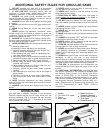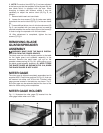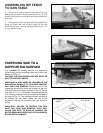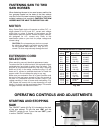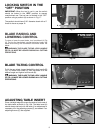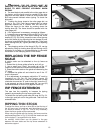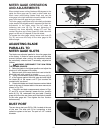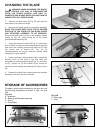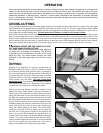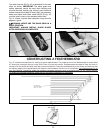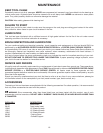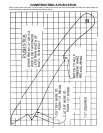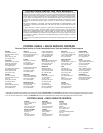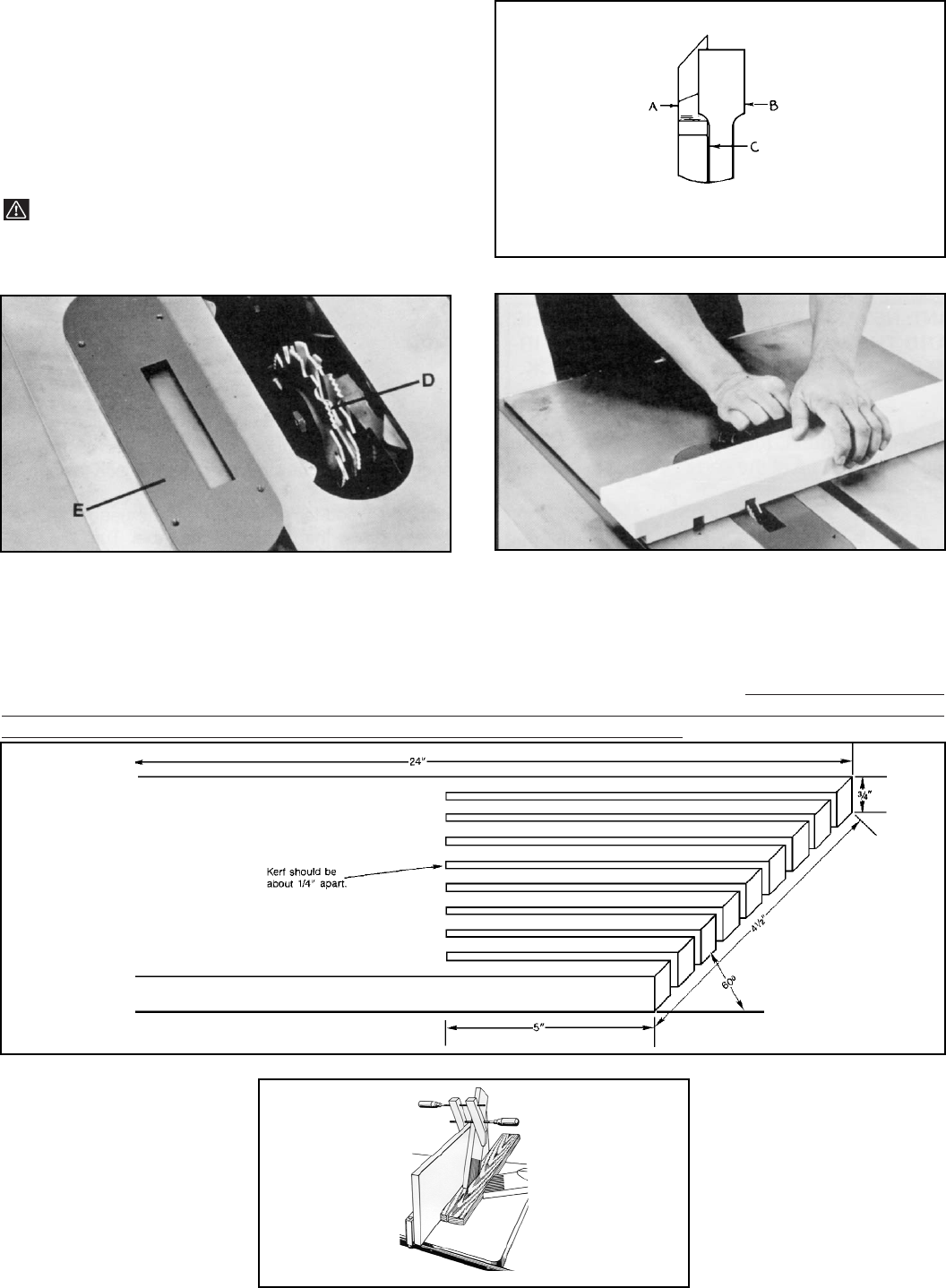
15
CONSTRUCTING A FEATHERBOARD
Fig. 42, illustrates dimensions for making a typical featherboard. The material which the featherboard is constructed
of, should be a straight piece of wood that is free of knots and cracks. Featherboards are used to keep the work in
contact with the fence and table and help prevent kickbacks. Clamp the featherboards to the fence and table so that
the leading edge of the featherboards will support the workpiece until the cut is completed. Use featherboards for all
non “thru-sawing” operations wher
e the guard and spreader assembly must be r
emoved (see Fig. 43). Always replace
the guar
d and spreader assembly when the non thru-sawing operation is completed.
Fig. 42
The dado head set (D) Fig. 40, is assembled to the saw
arbor as shown. IMPORTANT: The blade guard and
splitter assembly cannot be used when dadoing and
must be removed. Auxiliary jigs, fixtures, push sticks and
feather boards should also be used. Also, the accessory
dado head table insert Delta model 38122 (E) Fig. 40,
must be used in place of the standard table insert.
Fig. 41, shows a typical dado operation using the miter
gage as a guide.
WARNING: NEVER USE THE DADO HEAD IN A
BEVEL POSITION.
IMPORTANT: ALWAYS INSTALL BLADE GUARD
AFTER OPERATION IS COMPLETED.
Fig. 40
Fig. 41
Fig. 39
Fig. 43



